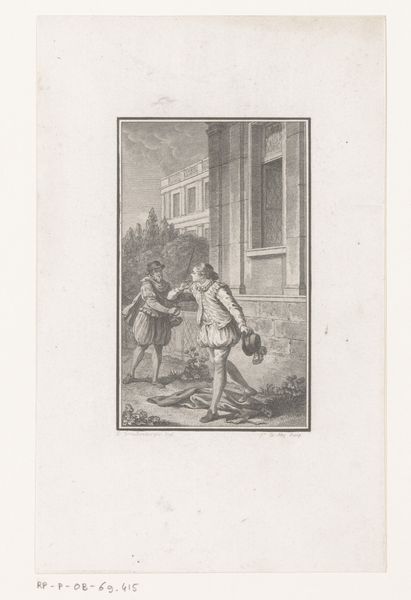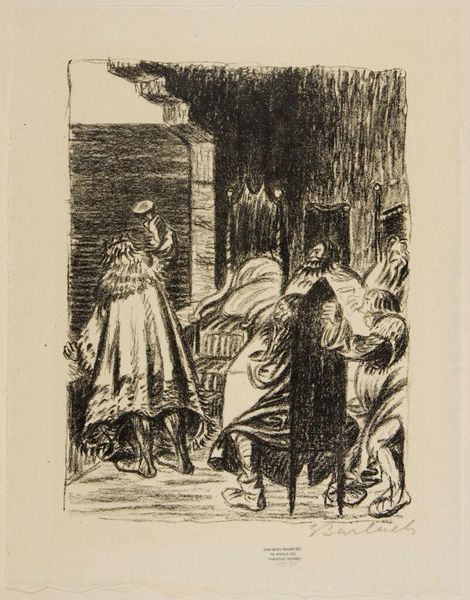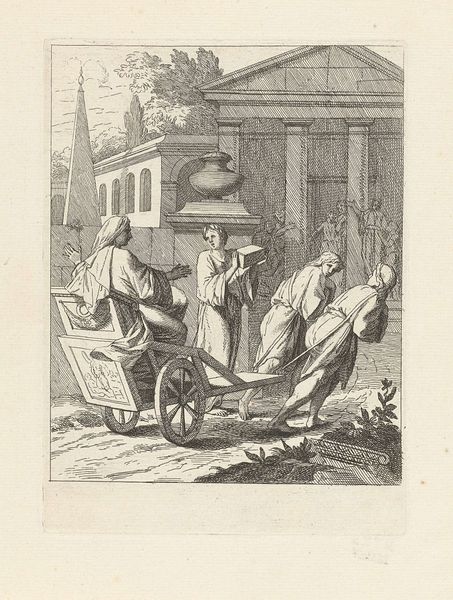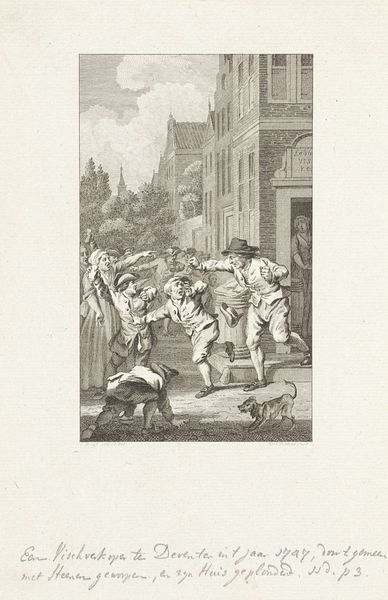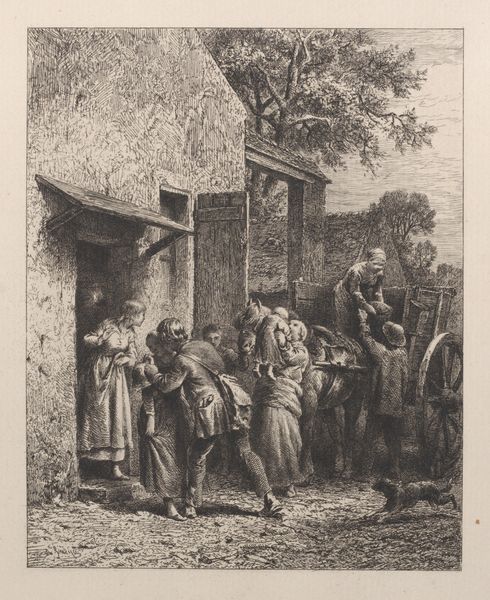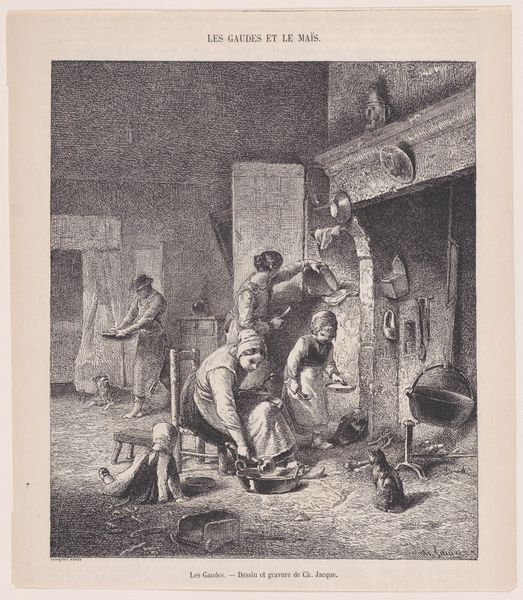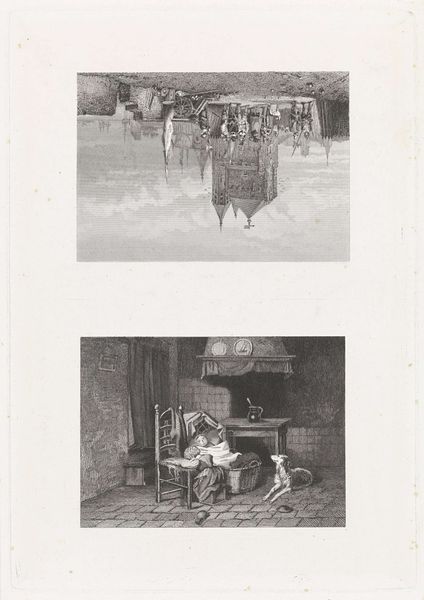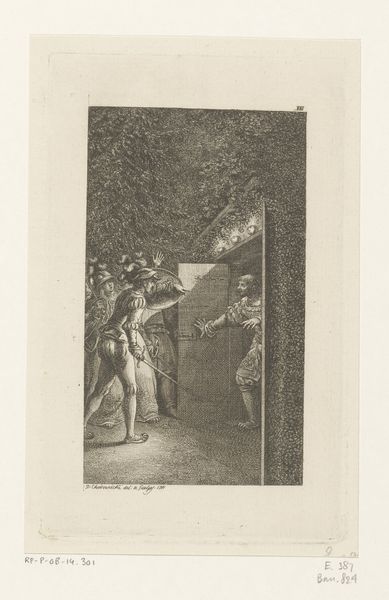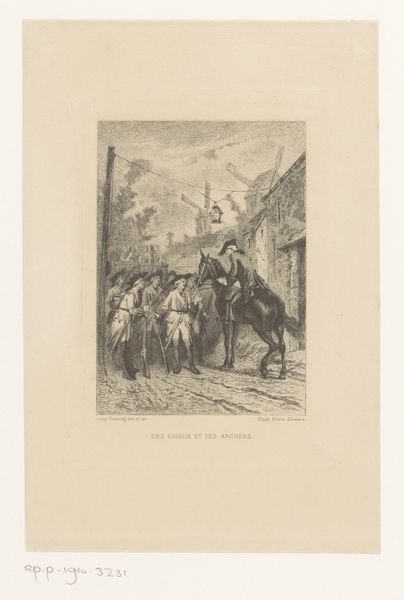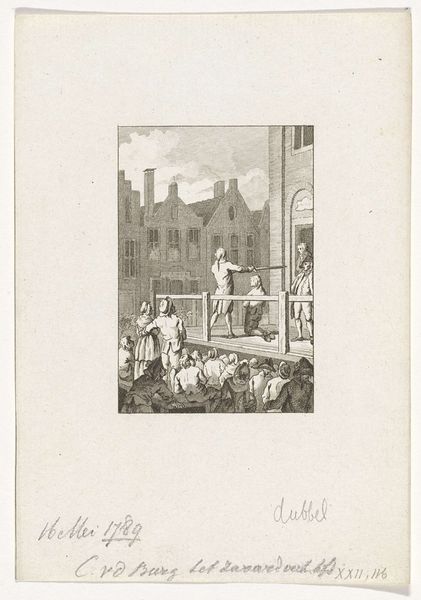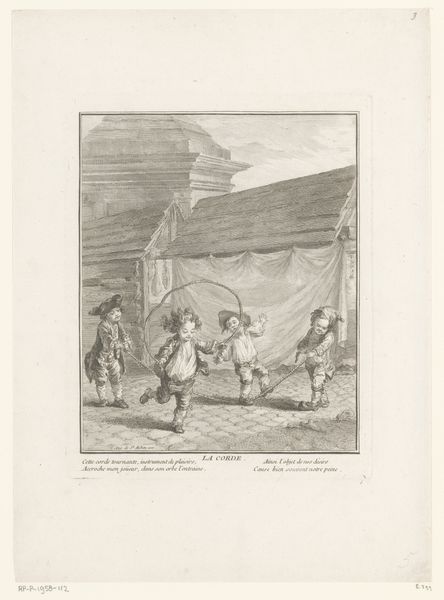
engraving
#
narrative-art
#
romanticism
#
cityscape
#
genre-painting
#
history-painting
#
engraving
Dimensions: height 224 mm, width 153 mm
Copyright: Rijks Museum: Open Domain
Editor: So, this is "Man met een brief bij een overval op een koets" – which translates to "Man with a letter at the robbery of a coach" – dating somewhere between 1797 and 1836 by Philippus Velijn. It's currently housed in the Rijksmuseum, and it’s an engraving, if I'm not mistaken? What strikes me most is the kind of theatrical drama Velijn captures here. The chaos and the vulnerability... What pulls you in when you look at it? Curator: Drama is key, isn't it? It's like stepping onto a stage where Romanticism is playing out. Notice the lighting – it’s not just illuminating; it’s heightening the tension. That dog atop the carriage, for instance; an unwitting spectator in a scene far below, a street play of intrigue. There is that looming darkness… Velijn doesn’t just depict an event; it captures an entire narrative arc. Do you see the desperation in that begging boy? Or, what do you make of that seated woman with a walking stick and a look of despair on her face? Editor: Right! It almost feels like the city itself is holding its breath. Her resignation amidst the frenzy definitely heightens the impact. Curator: Precisely. There’s something wonderfully unnerving in such composure amidst the mayhem, a feeling not out of kilter to life itself. Velijn asks us, how do we reconcile the intimate human drama within a society often teetering on the edge? This is Romanticism with teeth. A slice of life as stark as it is staged. Editor: I see it now. The staged nature really draws you into each element, inviting you to imagine the wider context around these figures. It’s amazing how much story an engraving can hold. Curator: Absolutely. An engraving is an entire play within lines and shadows. This is not only the robbery of a carriage, but also the theft of innocence. Editor: Thank you for highlighting such intricacies; it’s really opened my eyes.
Comments
No comments
Be the first to comment and join the conversation on the ultimate creative platform.

